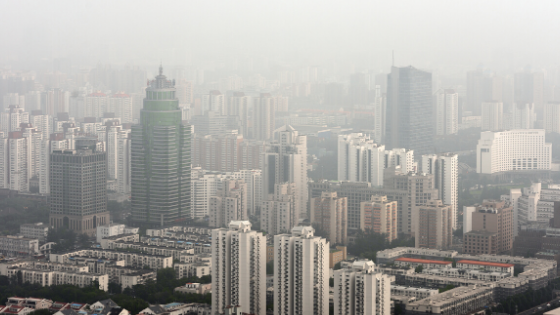Editor’s Note: Michael Stumo is CEO of the Coalition for a Prosperous America (CPA). Follow him at @michael_stumo
Western economists often believe that China’s economy follows a rough approximation of America’s. But it doesn’t. How, for example, can China build massive overproduction in industry after industry — when there’s already too much being produced? And how can so many of China’s manufacturers continually sell product on the world market at below the cost of production? The answer — hidden from global scrutiny — is that Beijing runs a permanent, economy-wide bailout program far exceeding the U.S. bank bailout of the Great Recession. It’s a relentless strategy, and Washington must finally confront it.
[Michael Stumo | March 27, 2020 | Rockford Register Star]
Twenty years ago, President Clinton gave a speech urging Congress to approve normalized trade with China. Reading his remarks now, we see the naivety that enabled such a huge strategic blunder. Clinton promised that Beijing’s entry into the World Trade Organization (WTO) would “move China in the right direction” and advance America’s “economic interests.”
Essentially, Clinton touted an effortless arrangement where Beijing would “open its markets.” All the U.S. had to do was “maintain the present access which China enjoys.”
In return, Clinton promised that “our companies will be able to sell and distribute products in China…without being forced to relocate manufacturing to China, sell through the Chinese government, or transfer valuable technology…We’ll be able to export products without exporting jobs…we’ll get valuable new safeguards against any surges of imports from China.”
Clinton was wrong. America’s annual trade deficits with Beijing have soared — rising from $83 billion in 2000 to $420 billion in 2018. That has cost an estimated 3.7 million U.S. jobs.
So much for ending the aggressive technology transfers, cyber-hacking, and forced relocation that have plagued U.S. firms. In June 2018, the White House issued a landmark report detailing the ongoing extent of China’s “intrusive regulatory gambits,” “economic coercion,” and “espionage.”
So much for Clinton’s pledge of “lowering the barriers that protect state-owned industries.” Shortly after China joined the WTO, it funneled $25 billion in direct aid to its steel industry.
And so much for China abiding by international norms. Beijing continues to persecute religious and ethnic minorities, including more than one million Uighurs sent to “indoctrination” camps and forced labor since 2017.
How did Clinton and other elites get it so wrong? They assumed that the same principles that have guided western economies would also prevail in the Far East.
How exactly does Beijing accomplish this? A major reason — and hidden from view — is that China’s state-owned banks continually “loan” money to state-owned companies. Essentially, this is free money. It’s what has allowed China to keep overproducing everything from steel, cement, and chemicals to kitchen cabinets, plastics, and electronics. The Chinese steel industry, for example, now owes at least $484 billion in outstanding loans. But these loans will never be repaid.
The Chinese Communist Party (CCP) creates “bad banks” that buy these non-performing loans. The loans then disappear — and new ones are provided. It’s a rinse and repeat cycle.
This cycle is evident in the dozens of “ghost cities” that China has built over the past decade. These new metropolises remain unoccupied. But the work was done simply to keep the machine turning — and to absorb some of China’s overproduction of steel and other materials.
Unprofitable operations and “zombie companies” keep operating throughout China despite high debt levels. All of it violates the laws of the marketplace. But Beijing exerts total, top-down control over the national economy. It holds down wages and other forms of personal income while controlling roughly half of the country’s entire $14 trillion economy. The result is a rising China that is building the world’s largest economy and eroding America’s military, economic, and geopolitical power.
Beijing’s prime directive is to keep factories producing, people employed, and products sold at any price. Profit doesn’t matter. Demand for goods doesn’t matter. Production must continue—and increase.
Washington elites must finally grasp the full extent of Beijing’s win-at-all-costs strategy. Neither trade intervention nor the World Trade Organization can provide a “level playing field” in the face of the most massive subsidization scheme in history. The United States must begin to decouple from China, rather than enable this ongoing rise. Nothing else will work against such a relentless economic engine.
Read the original article here.













